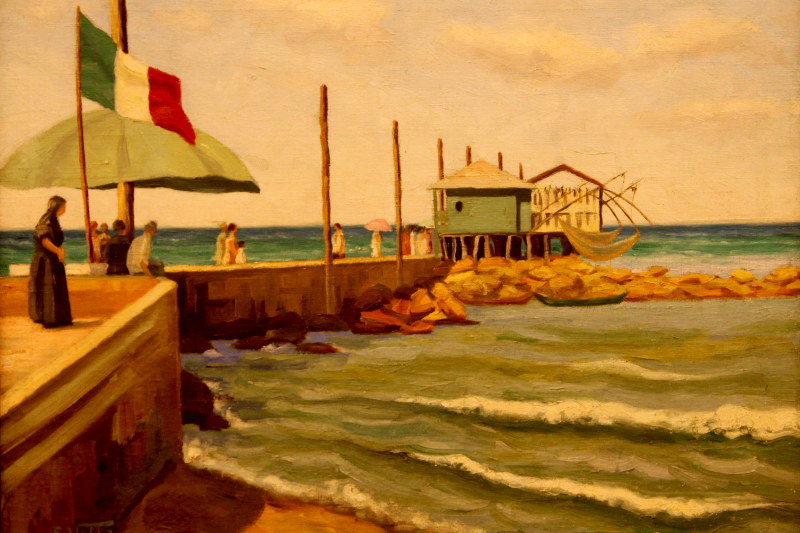There are a number of art galleries in Bogotá… and most of them are free. This particular gallery is one of the ones owned by the Banco de la República (Bank of the Republic); part of their mission is to protect Colombia’s national treasures and keep them out of harm’s way. Under their sphere of protection are artefacts found in the Museo de Oro, paintings and sculptures found in the Museo Botero, and the collections found in the Museo de Arte.
I wrote about Botero in a different post… and the pre-Colombian art found at the Museo de Oro… and mentioned Gregorio Vasquez in two other posts. Outside of these well known Colombian artists, there are others who had influence over the realm of art, sculpting, and mixed media in the country. Here are some of the Colombian Painters you’ll find in the gallery (minus Botero and Vasquez); all come roughly from the same era of art (between the 40s and 60s) and certainly would have known each other:
Enrique Grau (1920-2004)
Grau is most famous for his figurative paintings of Amerindian and Afro Colombians. But some of my personal favourites include the more traditional Colombian style of painting that he did in the 60s, which depict Colombians in Tim Burton-esque dimensions and black and white striped clothing.
Marco Ospina (1912-1983)
There was a phase in the sixties and seventies in Colombia, when landscape paintings took on erotic and violent connotations… and where painters linked the suffering of nature to the suffering of the human body. Through this link, landscape painters were able to create a metaphor which they used to denounce those responsible for the violence between Liberals and Conservatives with no real repercussions. Works by Ospina during this time are a great example of this.
Francisco Antonio Cano Cardona (1865-1935)
Cano’s work comes from the Republican Period of Colombian art (before everyone else linked here) and as is typical for this period, Cano painted a lot of religious painting and oil portraits. As a student, he studied under Claude Monet in France. As a teacher, he served as a mentor for many Colombian painters.
Carlos Correa (1912-1985)
From an early age, Carlos Correa showed diversity in skills and started out originally as a singer… then as a photographer before entering the world of painting. He was an active socialist and created a lot of controversy with his work. Two of his paintings Anunciación and Carnaval (above) stirred up a lot of controversy in Colombia but also won a number of awards globally.
Eladio Vélez (1897-1967)
Sketcher, sculptor, cartoonist, and painter, Vélez’s work illustrates the everyday life of people in Itagüí where he lived. His preferred subjects to paint include portraits of personalities, family members, city and countryside, and self-portraits. Above is one of his daily life paintings titled Marina.
Rufino Tamayo (1899-1991)
Technically, Tamayo is not Colombian but rather a surrealist Mexican painter whose work appears all over Colombia. I’m showing it here because I really like the colours. Also, it’s likely that Tamayo knew and was friends with the Colombian painters listed above.
